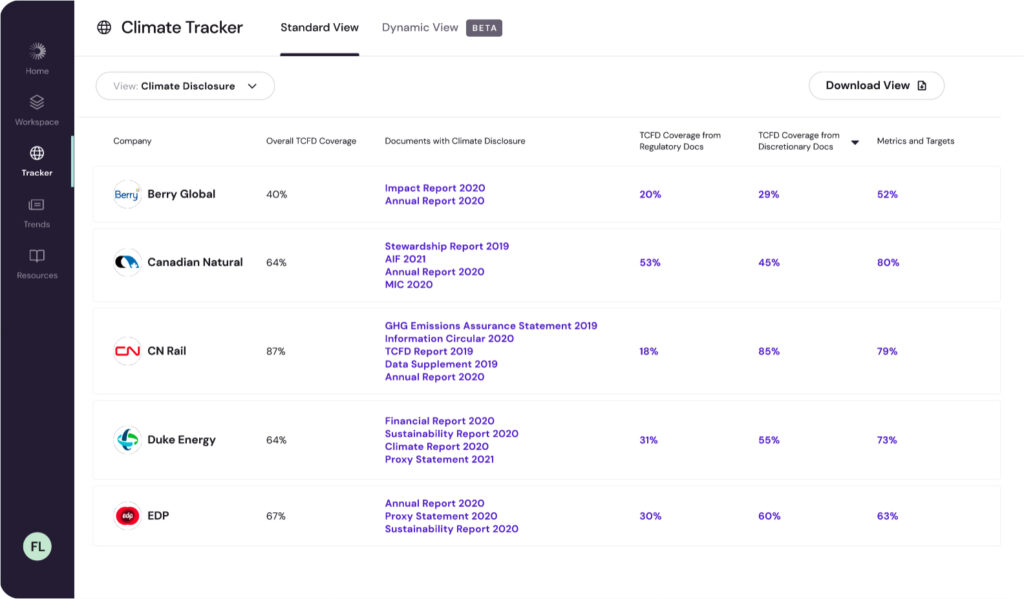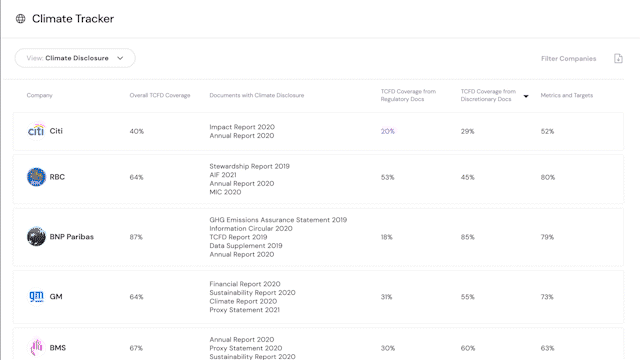Climate change is having a significant impact on businesses, from higher energy costs to supply chain disruptions. Investors and regulators increasingly want to understand businesses’ resilience to climate risks since this will shape their future financial performance and competitiveness.
The key to building climate resilience is good climate management. Businesses that have a handle on their climate risks and opportunities can reduce their costs, burnish their reputations, and stand out from industry peers. They may also find it easier to attract talented employees in a labor market that values climate-friendly companies.
The importance of benchmarking
Good climate management can help businesses cut their operational costs, enhance their brands, and stay ahead of shifting consumer preferences. Organizations that identify and implement climate-friendly practices can also differentiate themselves from competitors and attract environmentally conscious customers and investors.
There’s even evidence that good climate management can benefit organizations when it comes to their cost of capital. For example, a study by PanAgora Asset Management and Google Research shows that the more environmental, social, and governance data a company discloses, the lower its weighted average cost of capital.
How can businesses tell whether their climate management is up to scratch? The answer is by keeping track of their industry peers and climate leaders. By benchmarking their climate performance against similar firms, organizations can gauge the relative ambition and sophistication of their climate management. In addition, understanding how others are addressing their climate risks and opportunities can shine a light on the gaps in companies’ own approaches.
Organizations with data on how their climate management compares with peers can also leverage it for competitive advantage. For example, a manufacturer may be able to win more business if it can show prospective customers that its energy usage is more efficient and less carbon-intensive than its closest rival. This is especially true if clients are keen to lower the climate impact of their supply chains. In the fast-growing sustainable finance space, organizations that stand out for their climate management are also better able to tap into green and sustainability-linked bond markets for financing.
Introducing Climate Tracker
Manifest Climate’s solution features a cutting-edge Climate Tracker that organizations can use to benchmark their climate management and track their peers’ climate performance. It’s a one-stop-shop for conducting competitor analysis and accessing business-relevant climate data.

Tracker surfaces over 200 data points that provide a comprehensive picture of how organizations are addressing climate issues. The data is organized into a series of standardized “views” to aid navigation. For example, one view breaks down the climate information included in companies’ disclosures and shows how closely aligned these are with key reporting standards, like the Task Force on Climate-related Financial Disclosures (TCFD).
Users can also view the climate risks and opportunities that their peers are assessing and managing, helping to enrich their understanding of how climate change is shaping their respective industries. Tracker even surfaces data on organizations’ climate governance so clients can see how well-versed their peers’ boards and senior management teams are on climate issues.
Since climate risks and opportunities vary from sector to sector, users can build custom views in Tracker to filter the data points that matter to them most. These can bring new insights on peers’ climate actions and generate ideas for how to improve comapnies’ climate performance. For example, an organization mulling a net-zero target-setting approach may find inspiration by scanning their competitors’ methodologies and standards.
To further enhance their understanding of companies’ climate management, users can easily access each data point’s underlying source through the Disclosure Viewer. This feature can surface best practice climate disclosure examples to inform users’ own reporting.

Learn more
Knowledge is power. With Tracker, users can clearly see how their climate management stacks up against their peers and leverage data surfaced by Manifest Climate to advance their own climate plans.
Our Climate Risk Planning solution also provides all the tools and guidance needed to help businesses build internal climate competence, better align their disclosures with global reporting frameworks, and stay on top of market developments. Request a demo to learn more.

